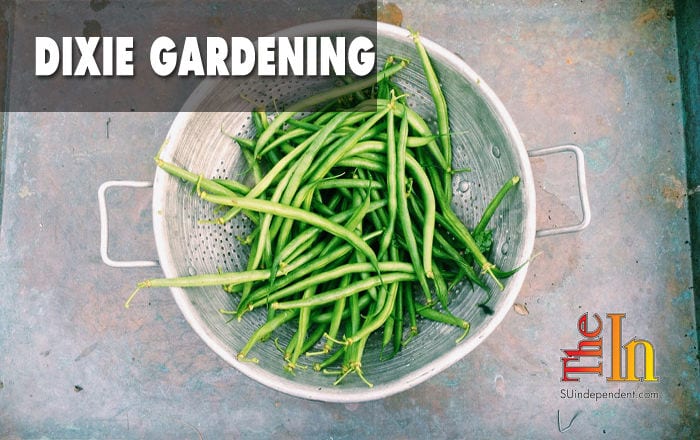I know the temperatures are still in the triple digits, but during this last week of August, you have just enough time to get some green bean seeds in the ground for a delicious fall harvest. Green beans, a.k.a. string beans or snap beans, are a warm season vegetable and don’t tolerate frost. They are a superb late summer grower and fall producer in the southwest, where summer seems to last forever, and you have two options for types of beans: bush beans and pole beans. Bush beans are just as they sound, in that they are little bushes full of beans. Pole beans are vines that will grow from 8 to 12 feet and are best supported on a trellis of some sort. Once you decide the growth habit you prefer, you just have to decide what variety of bean to grow. The choices are numerous! Green, yellow, and purple varieties are available in both bush and pole forms.
Beans require at least a half day of full sun. The soil should be moist and drain well, and it should be a rich mixture of compost and native soil. Plant pole beans in rows about six inches apart and one inch deep. Metal, wooden, and net trellises, as well as existing fences, work great to support the vines. For aesthetic interest, use bamboo stakes to build teepee trellises for your pole beans. Plant bush beans in rows about five inches apart and one inch deep. In addition to planting in the ground, you may plant bush beans in well-draining containers using potting soil. Keep the soil moist but not soggy, especially during flowering. Soaking the soil is preferred over sprinkling. Since beans are legumes, they fix their own nitrogen and don’t require large amounts added to the soil. However, a low-nitrogen fertilizer may be applied to support flowering. Always follow label directions, and water before and after fertilizing.
Green beans are considered ready for harvest when the seeds inside have formed and, when bent, the pod snaps in two. When picking, use one hand to hold the vine and one to remove the pod to avoid damaging branches that will grow more beans. Pole beans will continue to produce for a few weeks, but bush beans typically mature all at once. To have bush beans producing longer, sow batches of seeds two weeks apart beginning the middle of July and ending in late August.
Beans are very versatile in the kitchen. They may be steamed, roasted, braised, pickled, put in a casserole, added to a salad, and if you like bacon … well, green beans and bacon are meant to be together. Beans also preserve well and may be frozen or canned for future use. If you love green beans, give them a try in your garden! A variety with 50 days to maturity, meaning 50 days from planting to harvest, would be perfect. Contender bush beans are tasty, easy to plant, and grow quickly. Don’t waste any time getting those seeds in the ground, however. We usually have freezing temperatures around Halloween, and if you wait until September, you might be too late!




